Model Course
奈良公園の森林浴と巨樹めぐり
市指定文化財のイチイガシをはじめ、興福寺のクロマツ、春日大社のクスノキ、大仏池のイチョウなど奈良公園の巨樹を巡ります。
| Areas |
toudaiji |
|---|
Model Course
Nara City Tourist Information Center
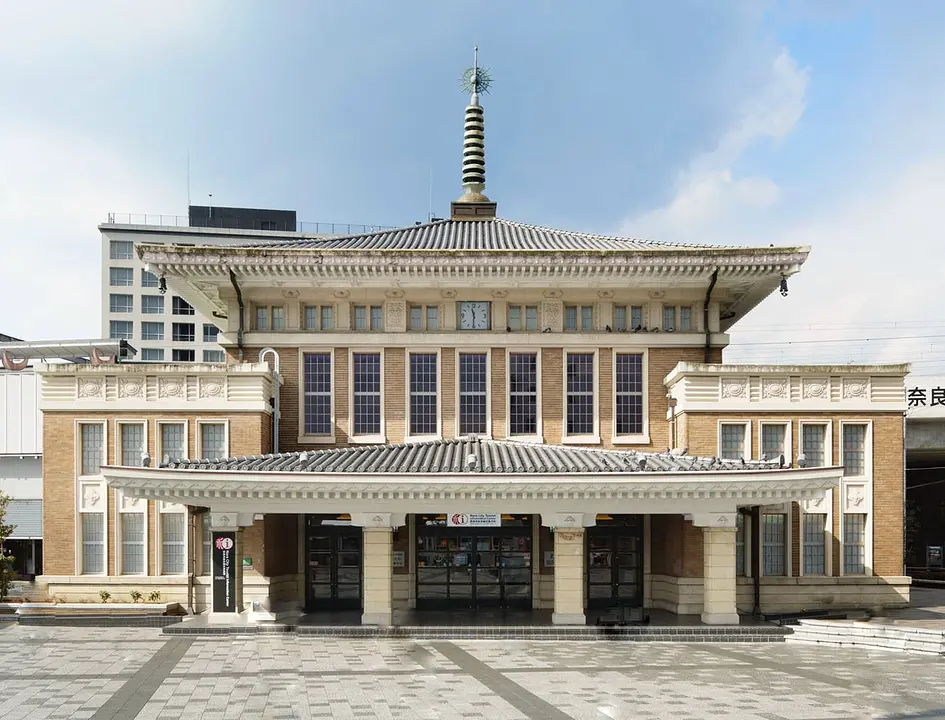
Nara City Tourist Information Center
The former station building of JR Nara Station opened on July 25, 2009 as the Nara City General Tourist Information Center. There is also tourist information in foreign languages and a tourist information search corner connected to the internet.
Kohfukuji Temple - Nanendo Hall
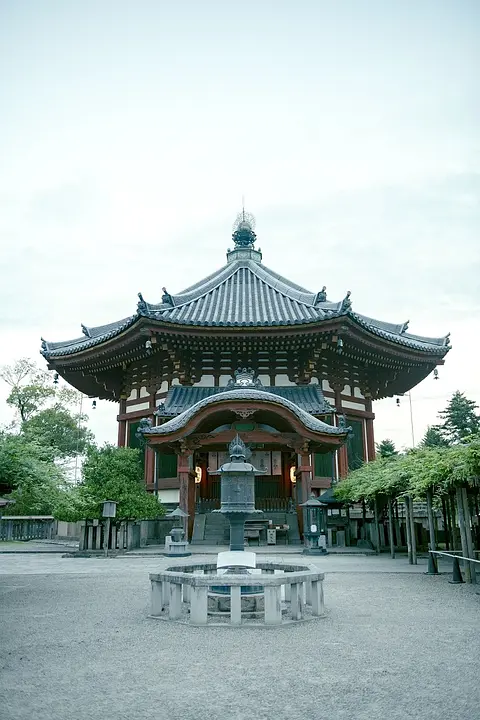
Kohfukuji Temple - Nanendo Hall
It is the largest octagon-shaped pagoda in Japan, and was originally built in 813. Having experienced several disasters, the present pagoda was rebuilt after it suffered a fourth catastrophe.
Tobihino
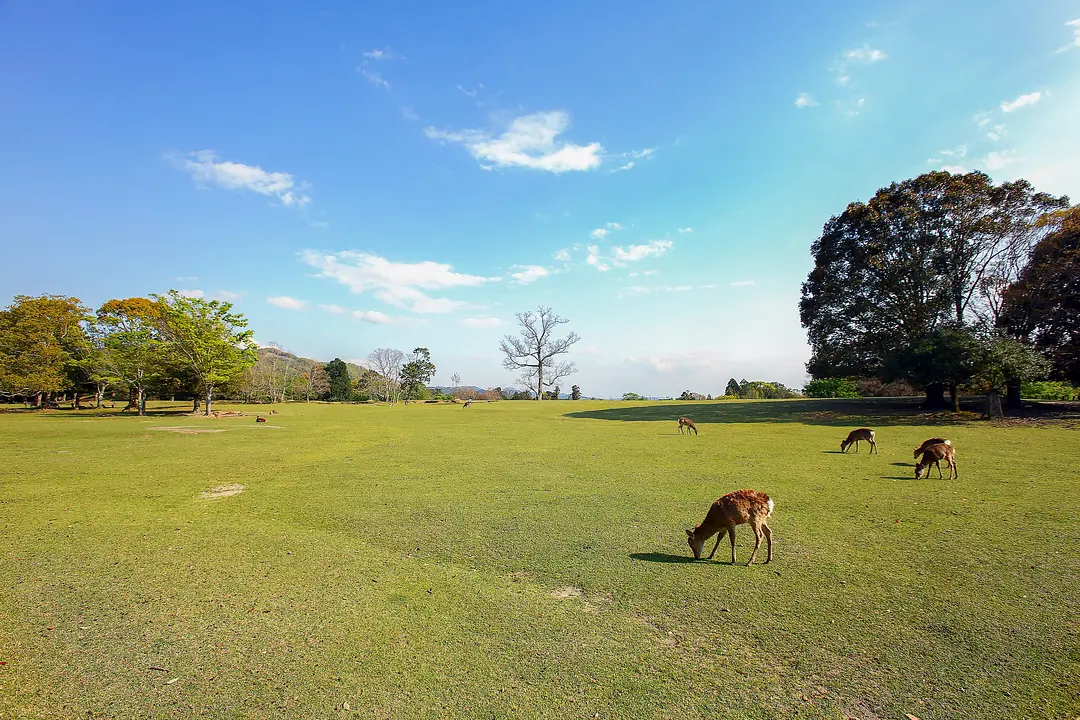
Tobihino
Tobihino, the precincts of Kasuga Taisha Shrine, is a vast field of grass facing Kasuga Taisha Omotesando. It is a great viewing point for Mt. Mikasayama, where deer are always playing in groups. Today it is called Tobihino, but in ancient times it was also called Kasugano, and was an ancient ritual site overlooking Mt.Mikasayama. The origin of the name "Tobihino" is that when Kashima Daimyojin arrived in Kasuga, his attendant, Yashiro no Mikoto, breathed fire from his mouth to light the way, and the flame never went out. It is said that it got its name because it looked like it was flying, and it is also said that it is said that it got its name from the fact that it looked like it was flying, and it is also said that flying fire means ``noroshi'', an ancient communication facility. In the old Manyo period, the aristocrats played polo, and during the Heian period, it was also known as a popular springtime spot for picking young greens and cherry blossom viewing.
Kasugataisha Shrine
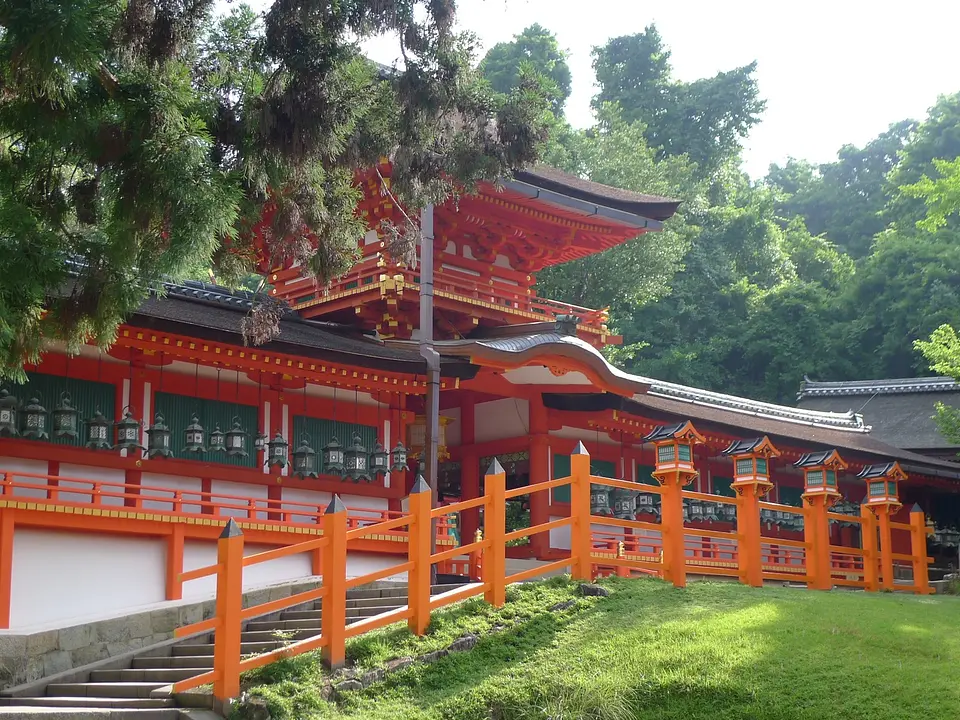
Kasugataisha Shrine
The Shrine lies in a primeval forest of cedars and a kind of Chinese black pines. The brilliant vermillon edifices are beautifully contrasted with their surrounding greenery. Going through the first and second Torii gates, you can see a lot of stone lanterns standing on both sides of the approach to the shrine. Going on further, you will find the south gate on the left. The main hall is located among trees behind the gate. From the gate a corridor extends to the left and to the right. A great number of lanterns hung from the eaves of the corridor are producing an elegant atmosphere. In the 3rd year of the Wado era (710), when the capital was transferred to Nara, Fujiwara-no-Fuhito celebrated a mass for tutelary deities of the Fujiwara family, which is considered to be the origin of this shrine. In the 2nd year of the Jingo-Keiun era (768), shrine buildings started to be constructed here. Just like the Kofuku-ji Temple,shrine buildings were added, along with the prosperity of the Fujiwara family. In the first half of the Heian period (794-1192), shrine buildings were completed on the same scale as they are today. After the Middle Ages, the belief was prevalent among commoners, which is shown by the fact that various-shaped hanging lanterns and stone lanterns known as "Mantoro" were mostly the donations from common people. The tutelary deities enshrined here are Takemikazuchi-no-Mikoto from Kashima of Ibaraki Prefecture, Futsunushi-no-Mikoto from Katori of Chiba Prefecture, Amenokoyane-no-Mikoto and Himegami from Hiraoka of Osaka Prefecture. (10 minutes' walk from the bus stop Kasuga Taisha Omote Sando of Loop Line Bus of the city)
Mount Kasuga Primeval Forest
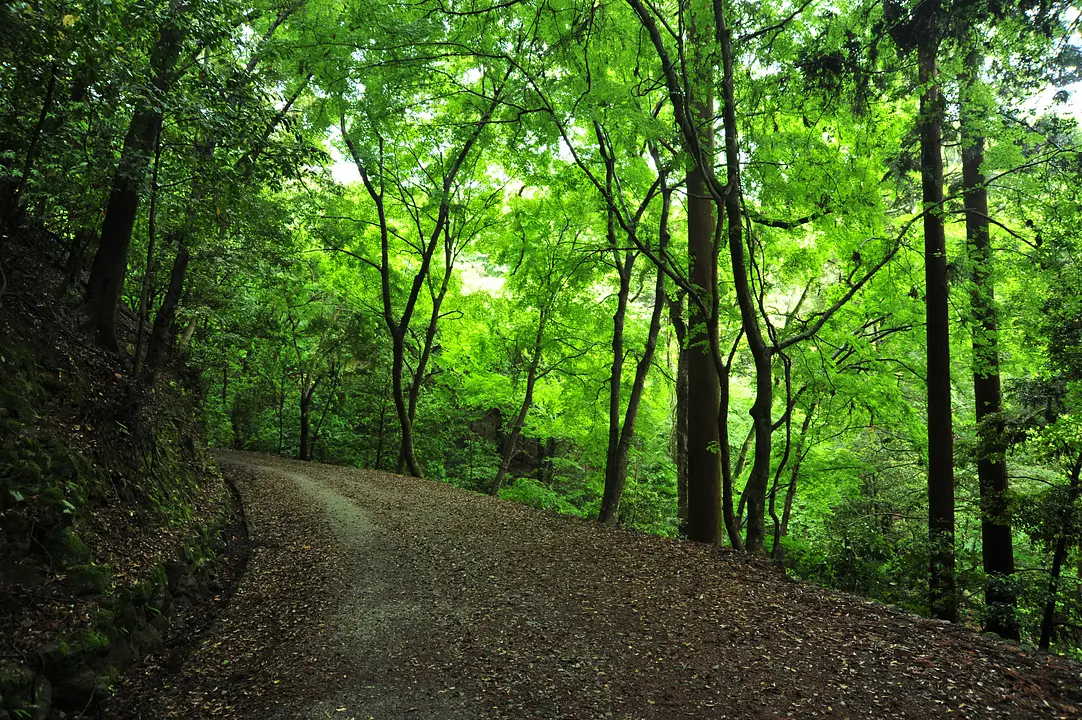
Mount Kasuga Primeval Forest
As the site of Kasuga Taisha Shrine, Mount Kasuga is a sacred mountain, and as such, for over 1,000 years, the felling of trees from its forests has been forbidden. Because of this, ancient evergreen oaks and beech trees grow here in this virgin forest of evergreens and deciduous trees. The depths of this forest are dark even during the daytime, and are home to such rare creatures as the forest green tree frog, the hime-haru cicada, and the clouded salamander. In 1955, the forest was nationally designated as a special natural momument, and in 1998 was registered as a World Heritage Site.
Tamukeyama Hachimangu Shrine
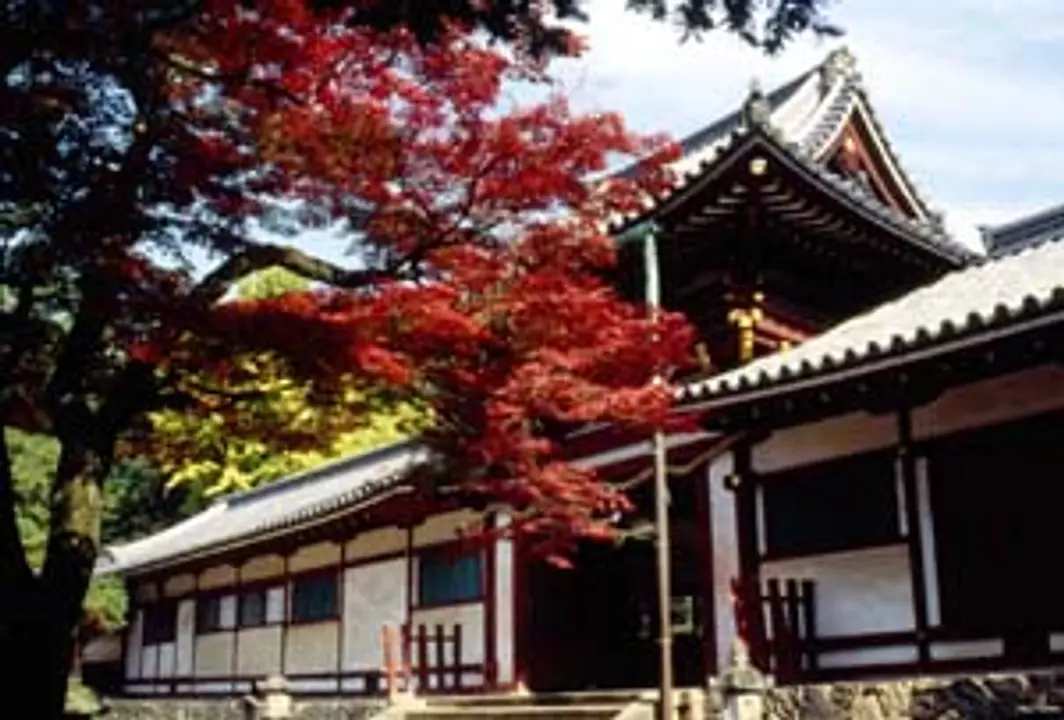
Tamukeyama Hachimangu Shrine
It was constructed in 794, around the time when the Great Buddha was built, in order to protect Todaiji Temple. It is also famous for its beautiful autumn leaves, and Sugawara-no Michizane wrote a waka poem, which says "I feel very sorry that I could not even prepare nusa(gift) to offer to the gods for this trip. Instead, I will use these beautiful colored autumn leaves as offerings." The treasure house in azekura-zukuri style(Important Cultural Property) was relocated from Todaiji Temple.
Todaiji Temple - Nigatsudo Hall
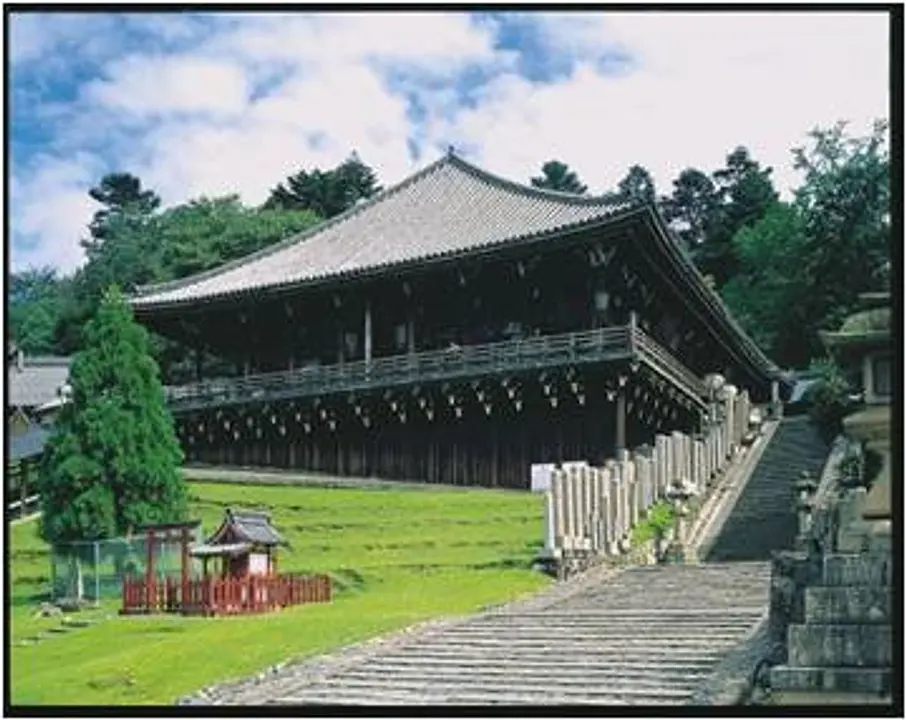
Todaiji Temple - Nigatsudo Hall
Nigatsu-do (Second Month Hall) named after the “Shuni-e (omizu-tori)” ceremony held at this place in the second month of the lunar calendar. Nigatsu-do remained despite the fires set by Taira-no Shigehira in 1180 and the fires from the battle of Miyoshi / Matsunaga in 1567, but it was burned to the ground by accident in 1667, during the Shuni-e (omizu-tori) ceremony. The presently standing building was rebuilt two years after this fire. The principle objects are statues of Kannon called O-gannon (big Kannon) and Ko-gannon (little Kannon), and to look upon them is forbidden, so they are always kept hidden from view.
Todaiji Temple - Nandaimon Gate
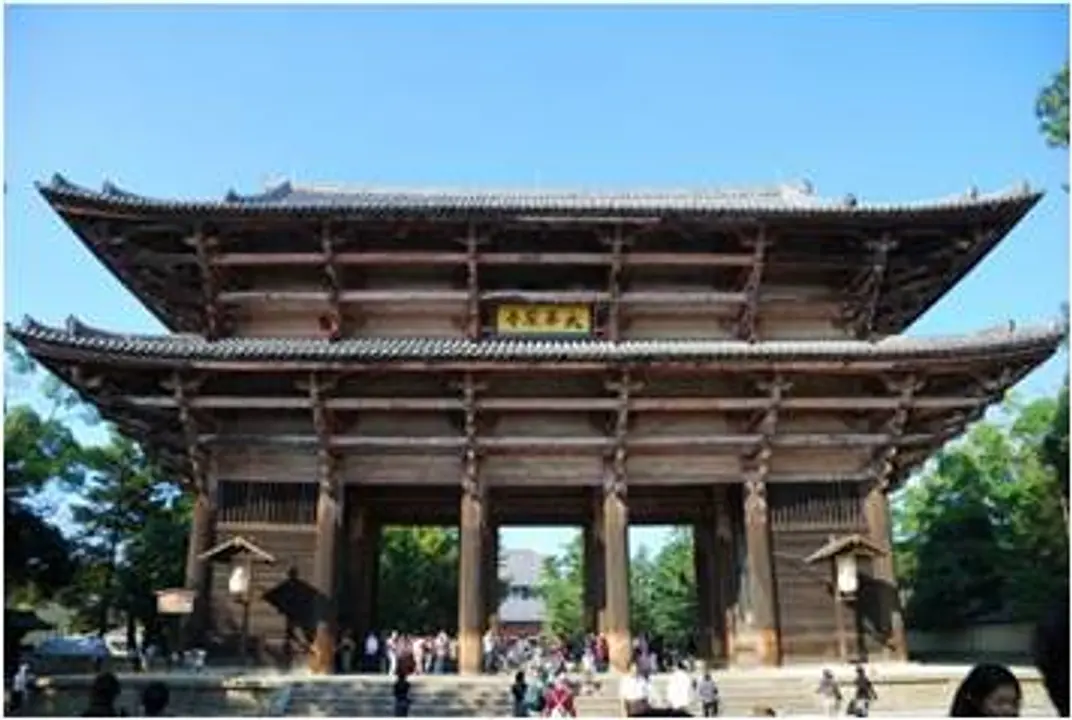
Todaiji Temple - Nandaimon Gate
The original gate (8th century) was destroyed by a typhoon in the 10th century. The current gate was reconstructed by the Buddhist saint Chogen Shonin who restored Todaiji Temple in the 13th century. The gate is a precious relic that recollects the majesty of the 13th century reconstruction of the Great Buddha Hall, which does not exist anymore. The 18 large columns which reach to the garret extend to 21 meters, and the height of the gate is 25.46 meters from the base podium. It is the largest main temple gate in Japan, and suitable for the Great Buddha Hall.